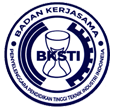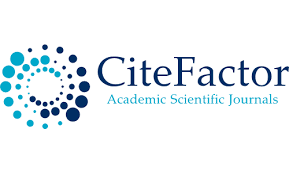Optimization and Selection of Boring Process Parameters for IS 2062 E250 Steel Plates Using Hybrid Taguchi-Pareto Box Behnken-Genetic Algorithm Method
Abstract
Keywords
Full Text:
PDFReferences
Abdullahi Y.U. and Oke S.A. (2022). Optimizing the boring parameters on CNC machine using IS 2062 E250 steel plates: Taguchi-Pareto-Box Behnken design and Taguchi-ABC-Box Behnken design perspectives, Engineering Access, 8(2), 219-241.
Ahmad, N., Tanaka, T., & Saito, Y. (2005). Optimization of cutting parameters for end milling operation by soap based genetic algorithm. Power , 318(2), 5.
Atia M., Khalil J., Mokhtar M. (2017). A cost estimation model for machining operations: An ANN parametric approach, Journal of Al-Azhar University Engineering Sector, 12(44), 878-885. https://doi.org/10.21608/auej.2017.19195
Čuboňová, N., Dodok, T., & Ságová, Z. (2019). Optimisation of the machining process using genetic algorithm. Scientific Journal of Silesian University of Technology. Series Transport. 104, 15-25. http://dx.doi.org/10.20858/sjsutst.2019.104.2
Dave, S., Vora, J. J., Thakkar, N., Singh, A., Srivastava, S., Gadhvi, B., Patel, V.V., Kumar, A. (2016). Optimization of EDM drilling parameters for aluminium 2024 alloy using response surface methodology and genetic algorithm. Key Engineering Materials, 706, pp. 3–8. http://dx.doi.org/10.4028/www.scientific.net/KEM.706.3
Dennison M.S., Abdul Khadar S.D., Karuppusami G. (2012). Optimization of machining parameters for face milling operation in a vertical CNC milling machine using genetic algorithm. IRACST-Engineering Science and Technology: An International Journal, 2(4), pp. 544-548
Dhavamani, C., & Alwarsamy, T. (2012). Optimization of machining parameters for aluminium and silicon carbide composite using genetic algorithm. Procedia Engineering, 38, 1994–2004. https://doi.org/10.1016/j.proeng.2012.06.241
Ganesan, H., Mohankumar, G., Ganesan, K., & Ramesh Kumar, K. (2011). Optimization of machining parameters in turning process using genetic algorithm and particle swarm optimization with experimental verification. International Journal of Engineering Science and Technology , 3(2), 1091–1102.
Izelu, C.O., Essien, E.I., Okwu, M.O., Garba, D.K. & Agunobi-Ozoekwe, C.N. (2021). Lathe boring operation on ASTM A304 steel parameter optimization using response surface methodology, Australian Journal of Mechanical Engineering, 19(5), 544-558. https://doi.org/10.1080/14484846.2019.1662534
Khundrakpam, N. S., Brar, G. S., & Deepak, D. (2018). Genetic algorithm approach for optimizing surface roughness of Near dry EDM. IOP Conference Series: Materials Science and Engineering, 376(1), p. 012130. http://dx.doi.org/10.1088/1757-899X/376/1/012130
Kilickap, E., & Huseyinoglu, M. (2010). Selection of optimum drilling parameters on burr height using response surface methodology and genetic algorithm in drilling of AISI 304 stainless steel. Materials and Manufacturing Processes, 25(10), 1068–1076. https://doi.org/10.1080/10426911003720854
Kilickap, E., Huseyinoglu, M., & Yardimeden, A. (2011). Optimization of drilling parameters on surface roughness in drilling of AISI 1045 using response surface methodology and genetic algorithm. The International Journal of Advanced Manufacturing Technology , 52(1), 79–88. http://dx.doi.org/10.1007/s00170-010-2710-7
Kumar, S., Meenu, Satsangi, P.S. (2012). A genetic algorithmic approach for optimization of surface roughness prediction model in turning using UD-GFRP composite. 19(6), 386-396.
Mahesh, G., Muthu, S., & Devadasan, S. R. (2015). Prediction of surface roughness of end milling operation using genetic algorithm. The International Journal of Advanced Manufacturing Technology , 77(1-4), 369–381. https://doi.org/10.1007/s00170-014-6425-z
Marimuthu, P., Kumar, K., Raja, S., & Karthikeyan, D. S. (2015). Analyse and optimise machining parameters setting for CNC turning of inconel X-750 using genetic algorithm. 10(55), 3978-3981.
Nugroho, W., Baba, N.B. and Saptari A. (2016). Optimization on surface roughness of boring process by varying damper position, ARPN Journal of Engineering and Applied Sciences, 11(20), 11911-11918
Palanisamy, P., Rajendran, I., & Shanmugasundaram, S. (2007). Optimization of machining parameters using genetic algorithm and experimental validation for end-milling operations. The International Journal of Advanced Manufacturing Technology , 32(7), 644–655. https://doi.org/10.1007/s00170-005-0384-3
Rao, V. D., Raju, K. M., Subbarayan, N. V., & Mahesh, P. (2018). Multi objective optimization of surface roughness and material removal rate in end milling using genetic algorithm. AUT Journal of Mechanical Engineering, 2(1), 117-123, https://doi.org/10.22060/ajme.2018.12581.5373
Reddy, B.S.K., Nagaraju, S.K., Salmanm M.D. (2015), A study on optimisation of resources for multiple projects by using primavera, Journal of Engineering Science and Technology, 10(2), 235–248
Reddy N.S.K. & Rao, P.V. (2005). A genetic algorithmic approach for optimization of surface roughness prediction model in dry milling. Machine Science and Technology, 9, 63–84. https://doi.org/10.1081/MST-200051263
Saffar, R. J., Razfar, M. R., Salimi, A. H., Khani, M. M. (2009). Optimization of machining parameters to minimize tool deflection in the end milling operation using Genetic Algorithm. World Applied Sciences Journal , 6(1), 64–69.
Sangwan, K. S., & Kant, G. (2017). Optimization of machining parameters for improving energy efficiency using integrated response surface methodology and genetic algorithm approach. Procedia CIRP , 61, 517–522, https://doi.org/10.1016/j.procir.2016.11.162
Sardinas, R. Q., Santana, M. R., & Brindis, E. A. (2006). Genetic algorithm-based multi-objective optimization of cutting parameters in turning processes. Engineering Applications of Artificial Intelligence , 19(2), 127–133, https://doi.org/10.1016/j.engappai.2005.06.007
Tien, D.H., Nguyen, N.-T., Trung, D.D., Nguyen, V.C.C., Nguyen, Q., Luat, N.V., Huu, P.N. (2020). Optimization of cutting parameters and cutter helix angle for minimum surface roughness in flat-end milling of Al6061. Optimization, 62(4), pp. 1321-1331.
Zain, A. M., Haron, H., & Sharif, S. (2010). Application of GA to optimize cutting conditions for minimizing surface roughness in end milling machining process. Expert Systems with Applications, 37, 4650–4659. https://doi.org/10.1016/j.eswa.2009.12.043
Zeelan, B. N., Kumar, S. G., & Mosisa, E. (2013). Determining the Effect of Cutting Parameters on Surface Roughness Using Genetic Algorithm. Science, Technology and Arts Research Journal, 2, 98–101. https://doi.org/10.4314/star.v2i4.17
DOI: http://dx.doi.org/10.22441/ijiem.v3i2.15443
Refbacks
- There are currently no refbacks.

This work is licensed under a Creative Commons Attribution-NonCommercial 4.0 International License.
IJIEM - Indonesian Journal of Industrial Engineering & Management
Program Pascasarjana Magister Teknik Industri Universitas Mercu Buana
Kampus Menteng - Gedung Tedja Buana, Floor 4th
Jl. Menteng Raya No. 29 Jakarta Pusat- Indonesia
Tlp.: +62 21 31935454 Fax: +62 21 31934474
http://publikasi.mercubuana.ac.id/index.php/ijiem
Email: [email protected]

This work is licensed under a Creative Commons Attribution-NonCommercial 4.0 International License.
The journal is indexed by:






1.png)
.png)
.png)
.png)







